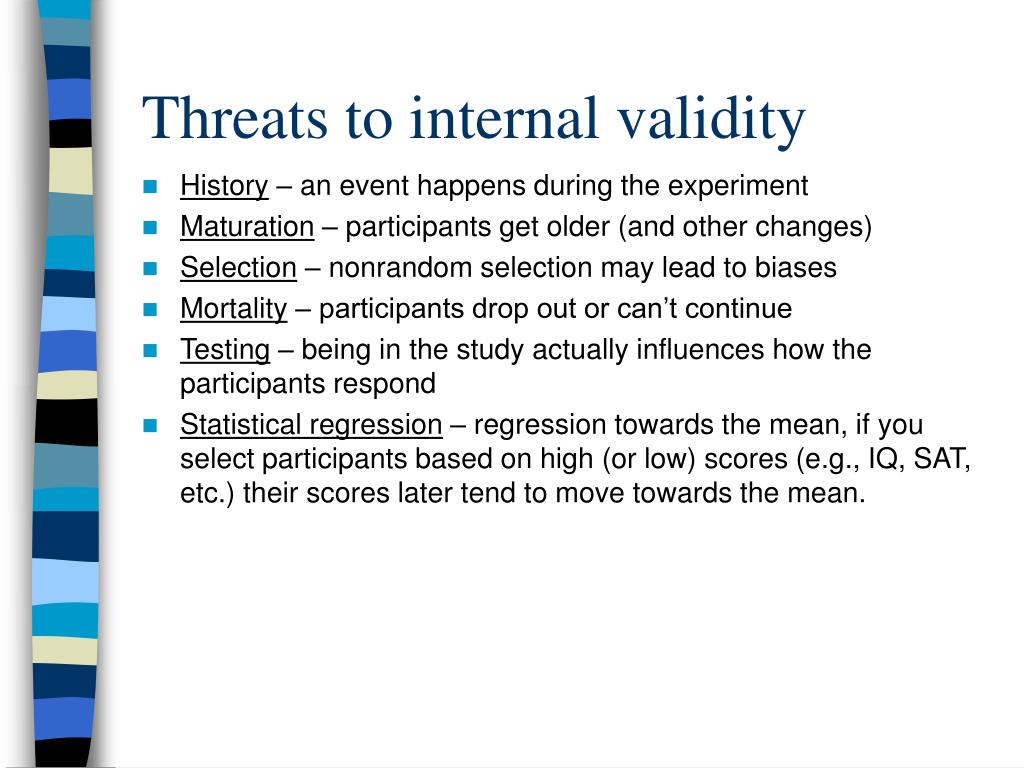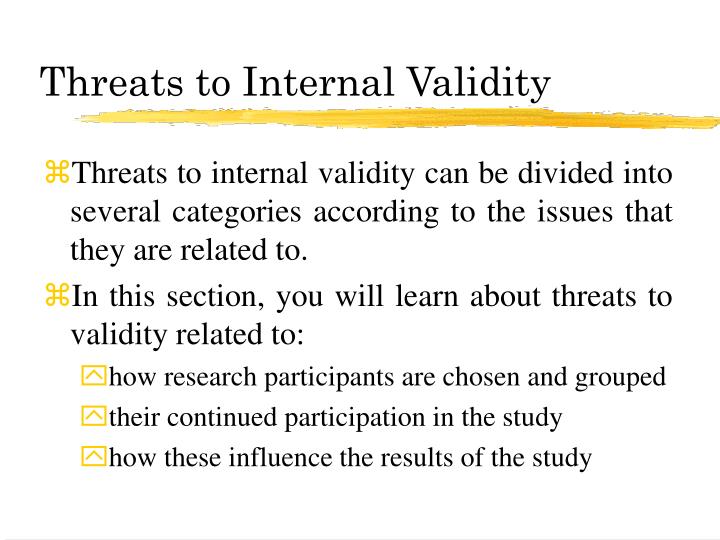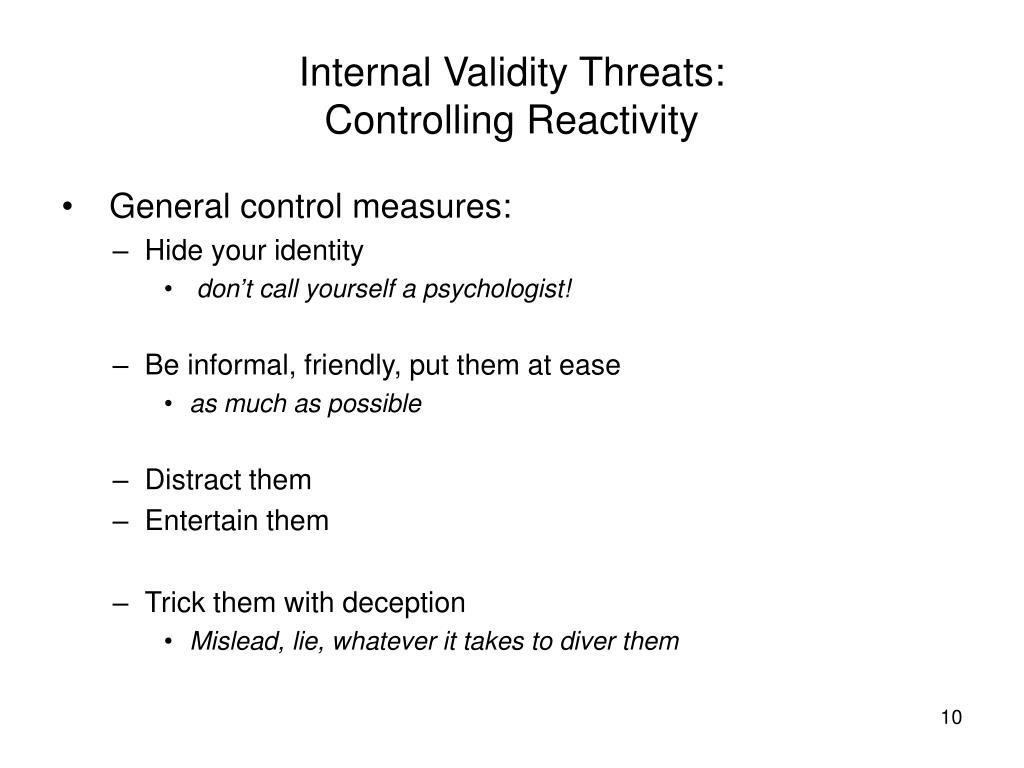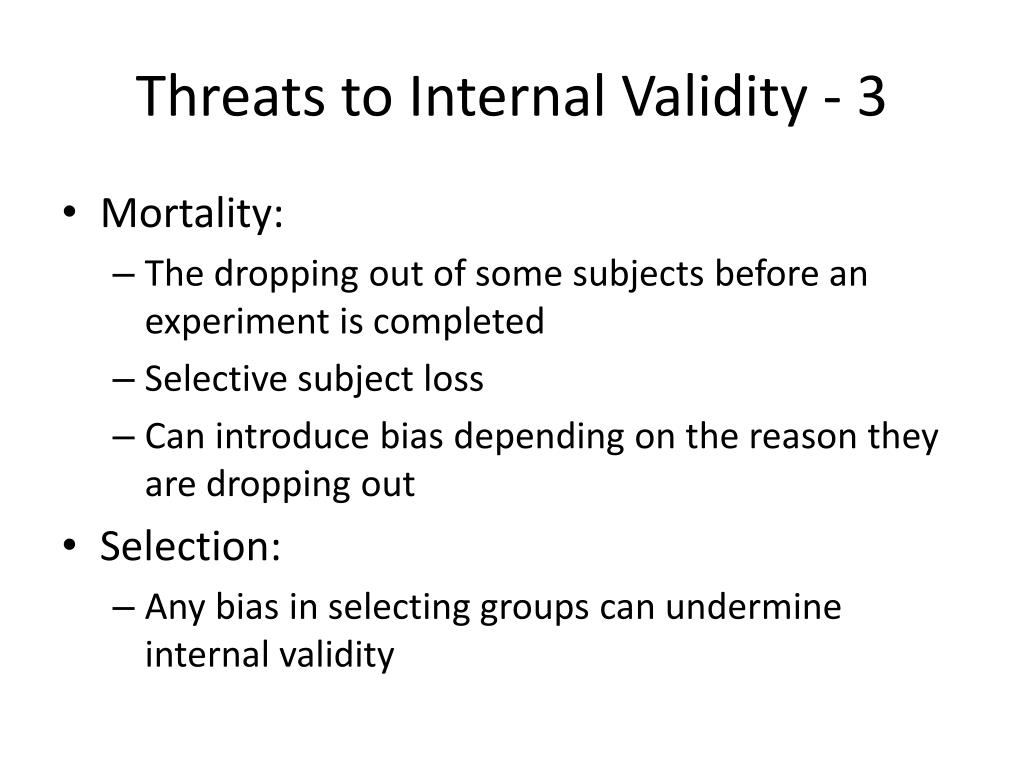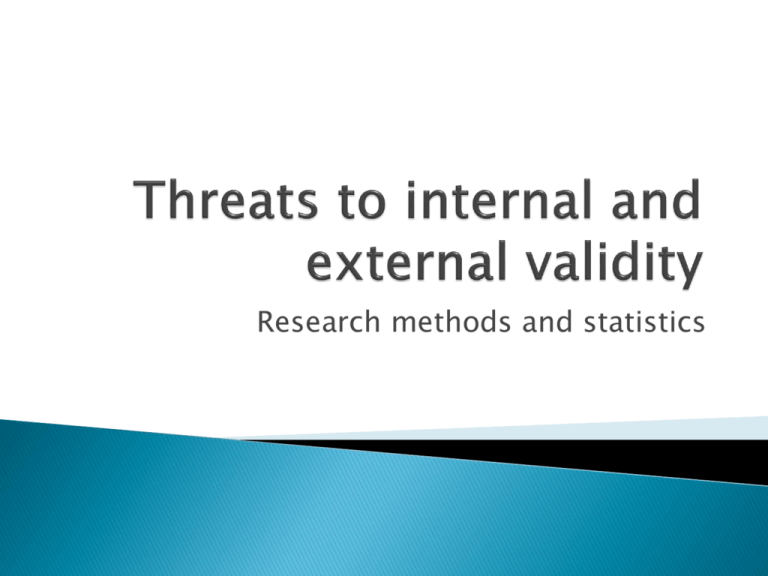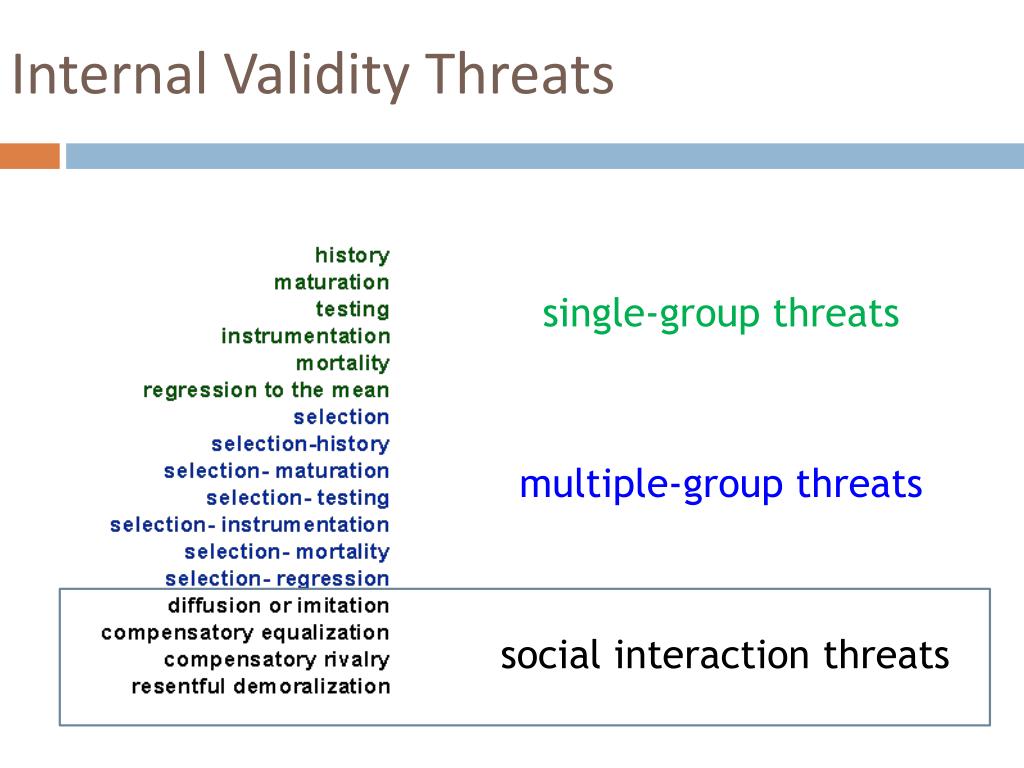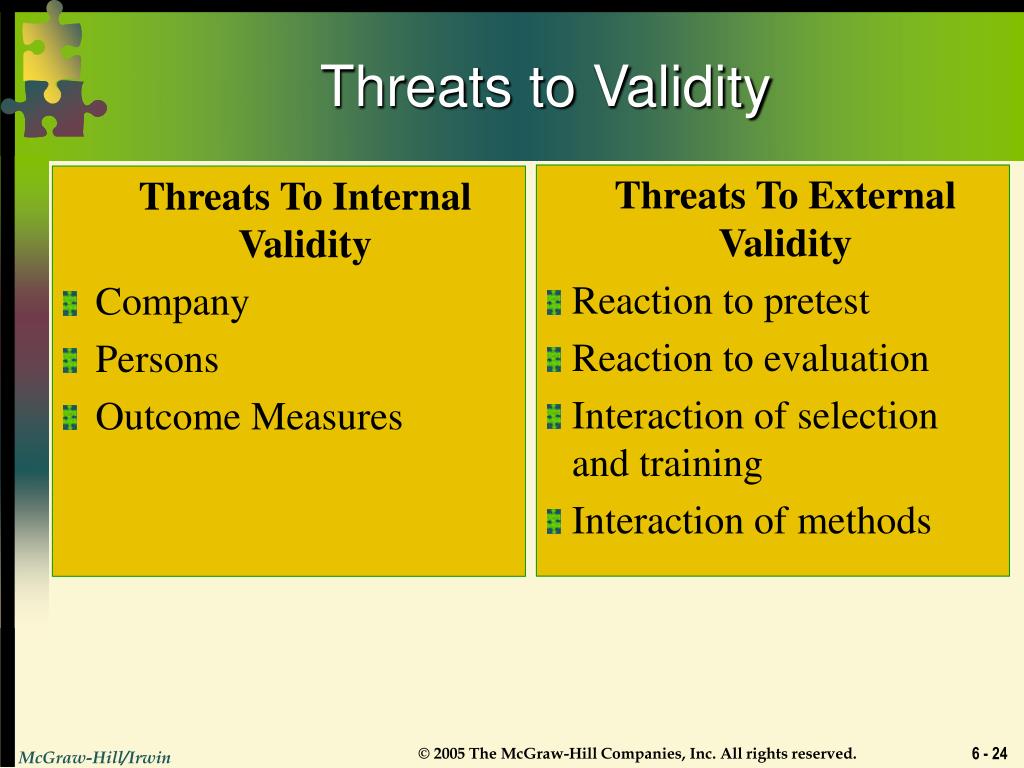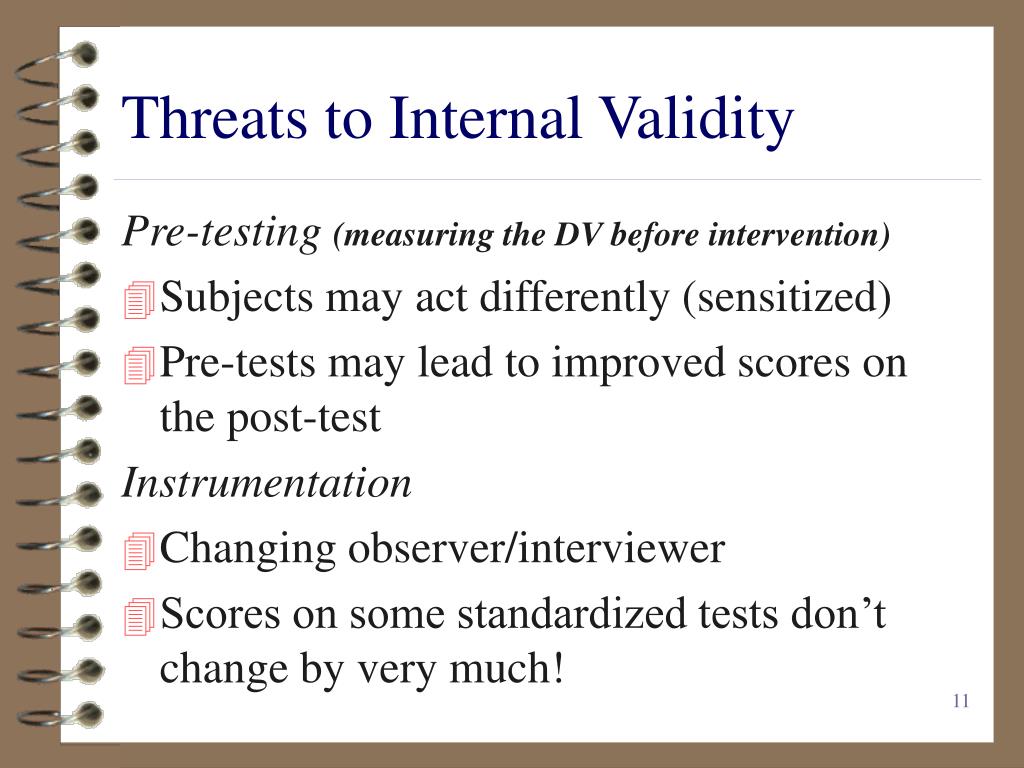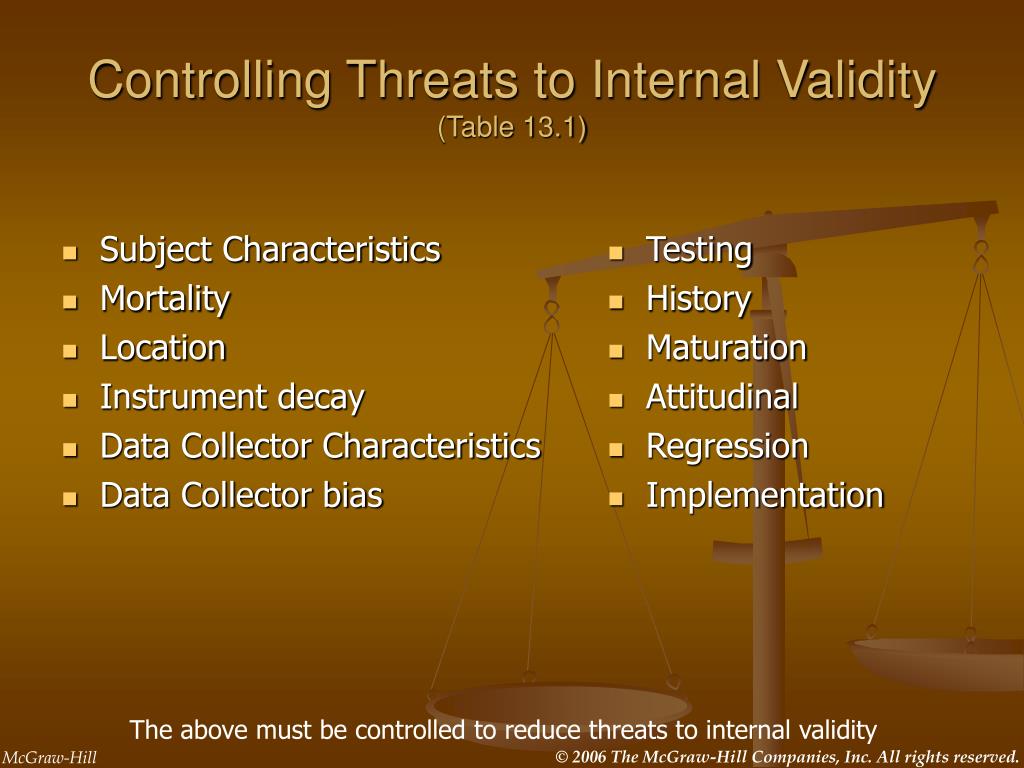Build A Info About How To Control For Threats Internal Validity

The controlled or experimental design enables the investigator to control for threats to internal and external validity.
How to control for threats to internal validity. In this post, learn more about internal and external validity, how to increase both of them in a study, threats that can reduce. What can a researcher do about them? Threats are organized into issues of statistical conclusion validity,.
This is a threat that is internal to the individual participant. Controlling for extraneous variables reduces its threats on the research design and gives us a better chance to claim the independent variable causes the changes in the dependent variable, i.e., internal validity. Threats to internal validity compromise our confidence in.
Unanticipated events change the conditions of the study and influence the outcome. Threats to internal validity; Controls are required to assure internal validity (causality) of research designs, and can be accomplished in four ways:
Threats to internal validity and how to counter them. In this chapter, we want to reconsider the various threats to internal validity we introduced in chapter 8. Frequently asked questions about internal validity.
Careful selection of participants and randomization) are believed to control measured or unmeasured factors that influence. Threats to internal validity are important to recognize and counter in a research design for a robust study. Natalie is a teacher and holds an ma in english education and is in progress on her phd in psychology.
However, there are many threats to internal validity. As a researcher, you can only find out the accuracy of your research if there are no factors to. Here are some common threats to.
We interpret most of these threats to study validity as suggestions for common causal structures. Multiple baseline designs—both concurrent and nonconcurrent—are the predominant experimental design in modern applied behavior. Avoid selecting participants based on extreme performance or scores.
There are different techniques we can use to control for extraneous variables. (1) manipulation, (2) elimination, (3) inclusion, and (4). Several threats can undermine internal validity and compromise the validity of research findings.
Threats to internal validity. The key features of the rct (i.e. An event only threatens internal validity if it could account for changes in at least three tiers—that is, the overall pattern of results (e.g., see fig.
But will you get the same results outside of the lab? Threats to internal validity the true experiment is considered to offer the greatest protection against threats to internal validity. An experiment is said to have internal validity when extraneous variables have been controlled.
